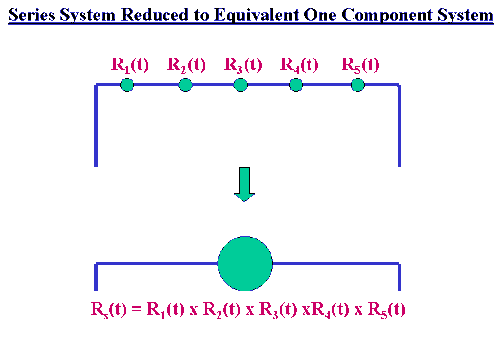8.1. Introduction
8.1.8. How can you evaluate reliability from the "bottom-up" (component failure mode to system failure rate)?
8.1.8.2. |
Series model |
The following three assumptions are needed.
- Each component operates or fails independently of every other one, at least until the first component failure occurs.
- The system fails when the first component failure occurs.
- Each of the \(n\) (possibly different) components in the system has a known life distribution model \(F_i(t)\).
Note that the above holds for any arbitrary component life distribution models, as long as "independence" and "first component failure causes the system to fail" both hold.
The analogy to a series circuit is useful. The entire system has \(n\) components in series. The system fails when current no longer flows and each component operates or fails independently of all the others. The schematic below shows a system with 5 components in series "replaced" by an "equivalent" (as far as reliability is concerned) system with only one component.


